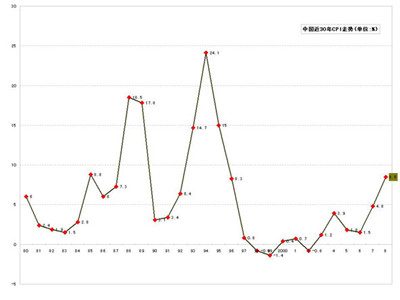预测当下
Taking the economic pulse
把握经济脉动
How to gauge the current state of the economy
如何衡量当前经济状态
IT IS hard to predict the future: witness forecasters' failure to foresee the financial crisis. Indeed, even ascertaining the current state of the economy is tricky. The first official estimates of quarterly GDP are generally published between four and six weeks after each quarter has finished. Interpreting them can be fraught since they are frequently revised. Such delays and uncertainties have led economy-watchers to search for other gauges.
预测未来是困难的:你看看那些未能成功预见金融危机的预测机构就知道了。事实上,即使要确定经济的当前状态也是棘手的。官方对季度GDP的估测一般是在每个季度结束后的4到6周方才公布。这些数据经常修订,要对它们做出解释实在挑战重重。而发布数据的拖延和不确定性也导致经济观察家们转而寻求其他的经济度量方式。

Simply asking business-folk what they think is a venerable tradition—Britain's Industrial Trends for example dates back to 1958—but such surveys are flourishing as never before. Among the most influential are purchasing-manager indices. Every month managers in both manufacturing and private services are asked whether their firms' output, employment, orders and the like have expanded or contracted. An index based on the net balance of their answers shows expansion above the level of 50 and contraction below it.
单刀直入问问商人们的想法是一个古老的传统,这可以追溯到1958年时的英国产业动态—但此类调查如今正经历前所未有的蓬勃发展。其中最有影响的是采购经理人指数。每个月,制造业和私人服务业的经理们都会被问到他们公司的产出,就业,订单量之类是否扩大或缩小。根据他们的答案得出一个净差额指数,若指数高于50,则是经济扩张的讯号,若低于50,则表明经济紧缩。
These findings can in turn be used to estimate the current rate of growth, given the previous relationship between the indices and GDP. For example, Markit, a research group, reported this week that their composite index for manufacturing and services in the euro zone stood at 52.8 in June. The survey suggests the euro area should grow by around 0.4% in the second quarter, twice as fast as in the first, says Chris Williamson, an economist at Markit.
基于这个指数以往与GDP之间的联系,这些发现可以反过来用于估计目前的经济增长速度。举个例子,根据研究小组麦盖提本周的报告,6月份欧元区制造业和服务业的综合指数为52.8。麦盖提的经济学家克里斯·威廉姆森说,本项调查显示,欧元区第二季度经济增长率约为0.4%,是第一季度增速的两倍。
Markit's estimate of second quarter euro-zone GDP growth appeared six weeks before the first official estimate. Such surveys have other benefits:the method is transparent and easy to grasp. And the findings are not revised once the final reports emerge a week after the “flash” estimates.
麦盖提公布的有关第二季度欧元区GDP的增长估测比官方评估结果整整早了六周。而且这样的调查还有其他好处:使用的方法完全透明且易于掌握。而且,一旦“闪电”估测一周后产生了最终报告,估测结果将不再进行修正。
Some data providers go further, seeking to exploit all relevant statistics, such as official figures for new passenger-car registrations. This requires a sophisticated model to extract a common signal for GDP from the welter of data that become available. This is the approach adopted by Now-Casting Economics, a firm whose founders include two economists, Lucrezia Reichlin and Domenico Giannone. In the case of the euro zone, their model gobbles up 50 monthly variables and uses their past relationships with GDP to calculate an estimate for the current quarter. At present the firm, whose clients are hedge funds and other asset managers, is expecting growth of 0.26% in the second quarter—somewhat more sluggish than Markit's estimate.
有些数据供应商则走的更远,寻求利用所有相关的统计信息,比如有关新型乘用车注册的官方数字。这需要一个复杂的模型来从冗杂的数据中提取出有关GDP的通用信号。目前,短时预测经济公司正是采用这种方法,其创始人包括两位经济学家,卢克雷西娅·赖希林和多梅尼科·詹诺内。在欧元区范围内,他们使用模型抓取了50个月的变量,并利用其过去与GDP的联系来计算、估测本季度的经济形式。该公司的客户是对冲基金和其他资产管理公司,目前它预期二季度经济增长率为0.26%,略低于麦盖提公布的估测数据。
In principle, the model-based approach might appear superior because it exploits more information. On the other hand, it is more of a black box. Since surveys are themselves an important source of information for the nowcasts this suggests that the two methods will co-exist.
原则上而言,因为基于模型的统计方式利用到更多的信息,可能会比普通方法更胜一筹。然而另一方面,它更多的是一个黑盒测试。由于调查本身也是短时预测信息的重要来源,这两种调查方式将会共存。













